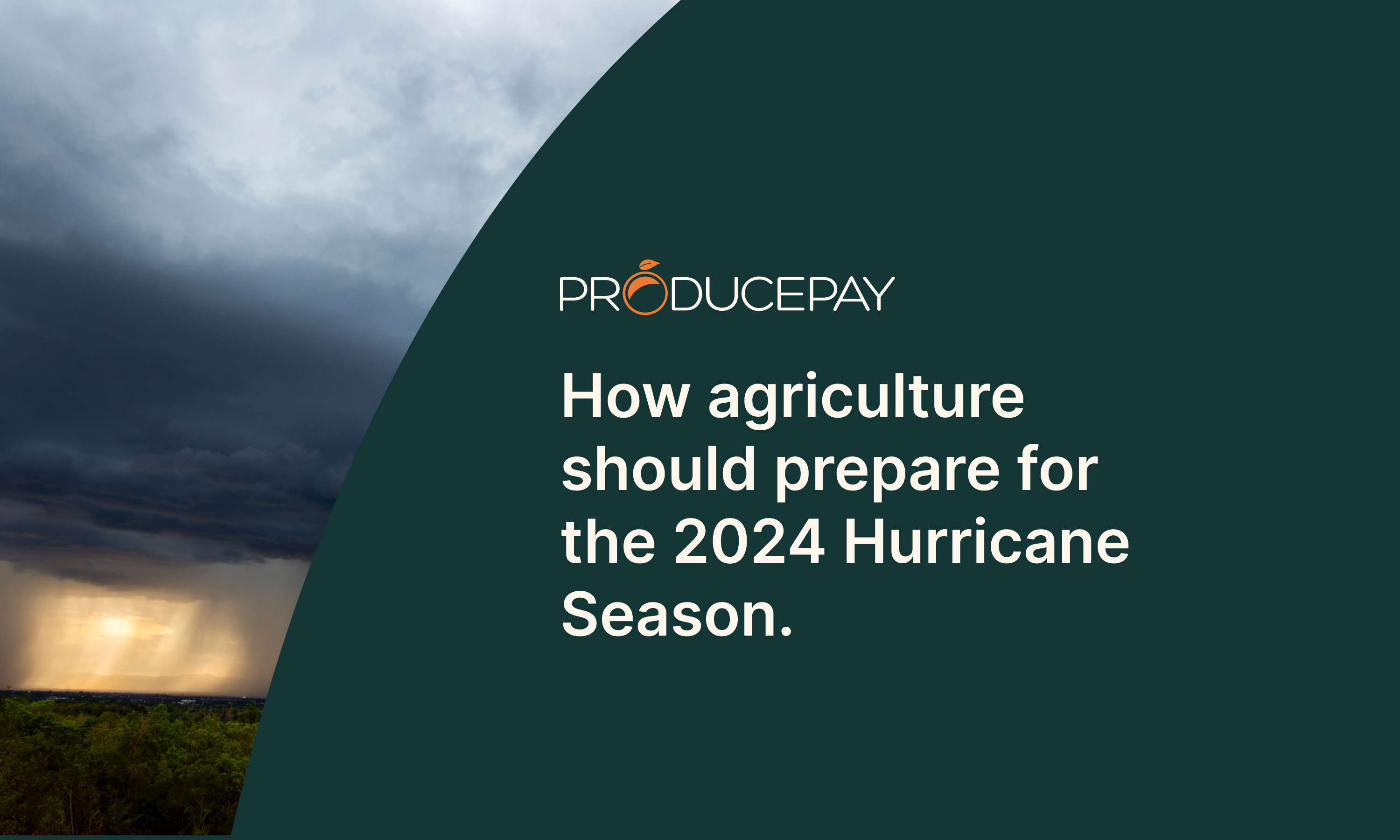
How agriculture should prepare for the 2024 Hurricane Season
The 2024 Atlantic Hurricane Season began on June 1st, and with the transition to La Niña, it is expected to be one of the most active in recent years. This year started with Tropical Storm Alberto, and a total of 23 storms are forecasted, with 11 potentially becoming hurricanes, 5 of which could reach Category 3 or higher.
With a significantly high number of weather events, the season adds greater volatility to the agricultural sector in the United States, as well as other regions in Latin America and the Caribbean.
Impact of the Hurricane Season
Hurricanes and tropical storms typically have a devastating impact on agricultural production. These phenomena can cause direct damage to crops due to strong winds, heavy rains, and storm surges, as well as flooding that can ruin entire fields. This can damage soil quality and encourage the development of plant diseases.
A relatively recent example of the devastation caused by these phenomena occurred in August 2023, when Hurricane Hilary caused significant damage in California, leading to losses of up to 50% in almond, tomato, and grape crops. Similarly, Hurricane Idalia caused significant losses in Florida, with agricultural damages estimated at $447.9 million.
But this is not the only way these phenomena can impact agricultural production. The Rio Grande Valley region in Texas, which is facing water supply issues, had hoped for relief from Tropical Storm Alberto, but the storm failed to deliver the expected rainfall, negatively impacting water levels in the Amistad and Falcon reservoirs, which remain critically low. The water scarcity threatens the region, which is crucial for the production of citrus, cotton, hay, and other agricultural products.
Another impact these phenomena often have is disruptions in marketing, logistics, and international supply chains. For example, in central Mexico, Tropical Storm Alberto affected several key farming areas, bringing heavy rains and reducing the production of fresh produce, which significantly decreased supply and raised wholesale prices in U.S. markets.
Likewise, Hurricane Beryl affected banana production in regions of Central America, papaya and tomato crops in Mexico, and caused shipping disruptions in the Gulf of Mexico, impacting crucial ports like Houston and Louisiana, reducing supply to the U.S.
Hurricane Debby, the Current Concern
Making landfall in Florida on August 5th, Hurricane Debby, a Category 1 storm, is the current phenomenon of this season. It is expected to cause severe flooding and dangerous storm surges, particularly in Florida and other southeastern states like Georgia, with up to 20 or 30 inches of rain in some areas.
In Georgia, several large farms are without electricity, and the greatest threat remains prolonged rains and flooding. The crops affected so far include melons, damaged by excess water, and corn, damaged by rain and strong gusts of wind.
The Georgia Department of Agriculture has already declared its readiness for post-storm recovery, although the total potential losses have yet to be estimated.
How Can the Agricultural Sector Prepare for Hurricane Season?
With the transition to La Niña conditions, hurricane activity is expected to increase due to reduced wind shear over the Caribbean and the Atlantic basin. Therefore, it is crucial that agricultural infrastructure and operations are prepared to withstand the potential damage caused by extreme weather events. Some recommendations are:
- Develop an Emergency Plan
The plan should include details such as meeting points, emergency contact lists, and evacuation routes. It is also essential to efficiently maintain and manage resource reserves and consider crop and business partner diversification, as well as the implementation of more efficient irrigation technologies. - Ensure Adequate Coverage
It is important to regularly review insurance policies to ensure they provide adequate coverage for potential damage to crops, facilities, vehicles, and infrastructure. - Document Damages and Losses
In case of damage, agricultural businesses should carefully document losses and report them to relevant authorities such as the Farm Service Agency (FSA) in the United States, which offers assistance under programs like the USDA’s Federal Crop Insurance Program and the Noninsured Crop Disaster Assistance Program (NAP). - Achieving Predictability in Agricultural Production and Marketing
Obtaining predictability in agricultural production and marketing is key to mitigating the risks associated with climatic and economic fluctuations.
ProducePay’s Predictable Commerce Programs stand out as a comprehensive solution to face these challenges. These programs connect top retailers and sustainable global growers, creating a more efficient and predictable supply chain.
For growers, this means securing stable prices and continuous market access, allowing them to plan for the long term, make strategic investments, and adopt advanced technologies to improve crop efficiency and quality, which is especially vital during high climate volatility seasons like hurricane season.
This collaborative approach not only benefits farmers but also ensures that marketers and retailers have a steady supply of high-quality products year-round, even in the face of significant weather challenges.
Learn more about how ProducePay is helping businesses find a better way to grow through its solutions and agricultural expertise.
Sources: USDA, Apnews, FreshPlaza, Fresh Fruit Portal, DTN, GPB, USDA-Farmers

